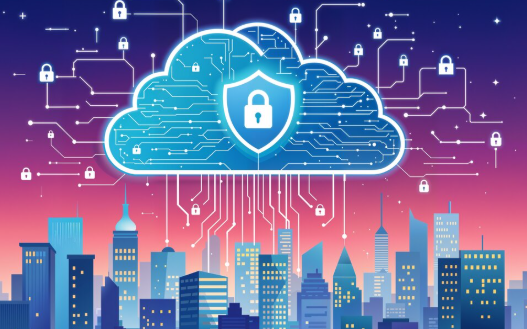In today’s interconnected world, where the digital landscape is both a playground and a battleground, cybersecurity stands as the guardian of our online realm. It’s the shield that protects us from malicious actors seeking to exploit vulnerabilities for financial gain, espionage, or simply chaos.
However, despite its critical importance, cybersecurity is often shrouded in myths and misconceptions. That’s why we’ll unravel the top 10 common cybersecurity myths and set the record straight.
Myth #1: Cybersecurity is Only for IT Professionals
Reality: Cybersecurity is Everyone’s Responsibility
It’s a common misconception that only IT professionals need to worry about cybersecurity. In truth, every individual within an organization plays a vital role in safeguarding its digital assets. Cybercriminals target non-IT professionals through methods like phishing and social engineering, recognizing them as potential entry points.
For instance, consider the CEO of a large corporation who falls victim to a phishing email, unknowingly granting hackers access to sensitive data. Such incidents highlight that cybersecurity is a collective responsibility, where awareness and vigilance are key.
Myth #2: Small Businesses are Not Targets for Cyber Attacks
Reality: Small Businesses are Frequent Targets
This is one of the most common cybersecurity myths. Some believe that small businesses fly under the radar of cybercriminals. Unfortunately, this couldn’t be further from the truth. Small businesses are prime targets due to their often less stringent security measures.
Cybercriminals understand that even a small breach can have a significant impact on a small business’s operations and reputation.
Statistics show that over 40% of cyberattacks are aimed at small businesses. It’s essential for these businesses to invest in cybersecurity measures to protect themselves and their customers.
Myth #3: Strong Passwords are Enough for Protection
Reality: Passwords Have Limitations
While strong, unique passwords are an essential part of cybersecurity, they’re not foolproof. Cybercriminals employ various techniques, including brute force attacks and password spraying, to crack passwords.
To enhance security, multi-factor authentication (MFA) should be embraced. MFA combines something you know (your password) with something you have (a smartphone, token, or fingerprint), providing an extra layer of protection.
Additionally, for enterprises, a zero trust architecture should be implemented across levels to protect confidential business data.
Myth #4: Cyber Attacks Only Happen Online
Reality: Cyber Attacks Extend Offline
Cybersecurity is not confined to the digital realm, contrary to what cybersecurity myths would have you believe. Cybercriminals may use physical means to breach security. For example, they might gain access to a building or server room or even intercept sensitive documents in transit.
Physical security practices, such as access controls, surveillance, and secure disposal of documents, are just as crucial as online security measures.
Myth #5: All Cyber Attacks are Immediately Noticeable
Reality: Some Attacks are Stealthy
Not all cyber attacks are loud and obvious. Some operate stealthily, with attackers infiltrating systems and collecting data over extended periods without detection. Regular system checks and the use of intrusion detection systems are essential to identifying these silent threats.
Myth #6: Antivirus Software Provides Complete Protection
Reality: Antivirus Software Has Limitations
Antivirus software is a critical component of cybersecurity, but it’s not a one-stop solution. It primarily detects known malware based on patterns and signatures. As cyber threats become more sophisticated, new malware variants and zero-day vulnerabilities emerge that antivirus software may not catch.
Complementing antivirus with firewalls, secure networks, and behavior-based analysis enhances overall security.
Myth #7: Cybersecurity is Expensive
Reality: Cost-Effective Cybersecurity Exists
While some cybersecurity solutions can be expensive, there are cost-effective practices and tools available that cybersecurity myths prevent you from exploring. Adopting measures like a password policy, employee education, and regular software updates is something you should definitely explore. Investing in cybersecurity is an investment in the long-term health and reputation of your organization.
The financial consequences of a cyberattack, including fines, legal fees, and loss of business, often outweigh the initial costs of cybersecurity measures.
Myth #8: Once Patched, Systems are Secure
Reality: Regular Patching is Necessary
Patching software and systems is crucial but doesn’t guarantee permanent security. Cybercriminals are quick to exploit newly discovered vulnerabilities, known as zero-day vulnerabilities. Regularly updating and patching systems is essential to staying ahead of cyber threats.
Myth #9: Cybersecurity Involves Restricting Access to Information
Reality: Balancing Security and Accessibility
Cybersecurity aims to strike a balance between protecting data and ensuring accessibility. Role-based access control (RBAC) is a critical strategy that grants access to information based on an individual’s role within an organization. It allows for secure access without unnecessary restrictions, promoting both security and productivity.
Myth #10: Hackers are the Main Cybersecurity Threat
Reality: Insider Threats and Human Error
While external hackers are a significant threat, insider threats and human error can be equally detrimental. Employees, intentionally or unintentionally, can compromise security. Comprehensive employee training in cybersecurity is essential to mitigate these risks and create a culture of security within an organization.
Conclusion
Knowledge is power in the world of cybersecurity. By debunking these common cybersecurity myths, we empower ourselves and our organizations to better defend against the ever-present threats in the digital landscape.
Remember, cybersecurity is everyone’s responsibility, and staying informed and vigilant is the key to staying safe online. It’s time to review and enhance your cybersecurity practices to protect what matters most, by partnering with STL Digital.



